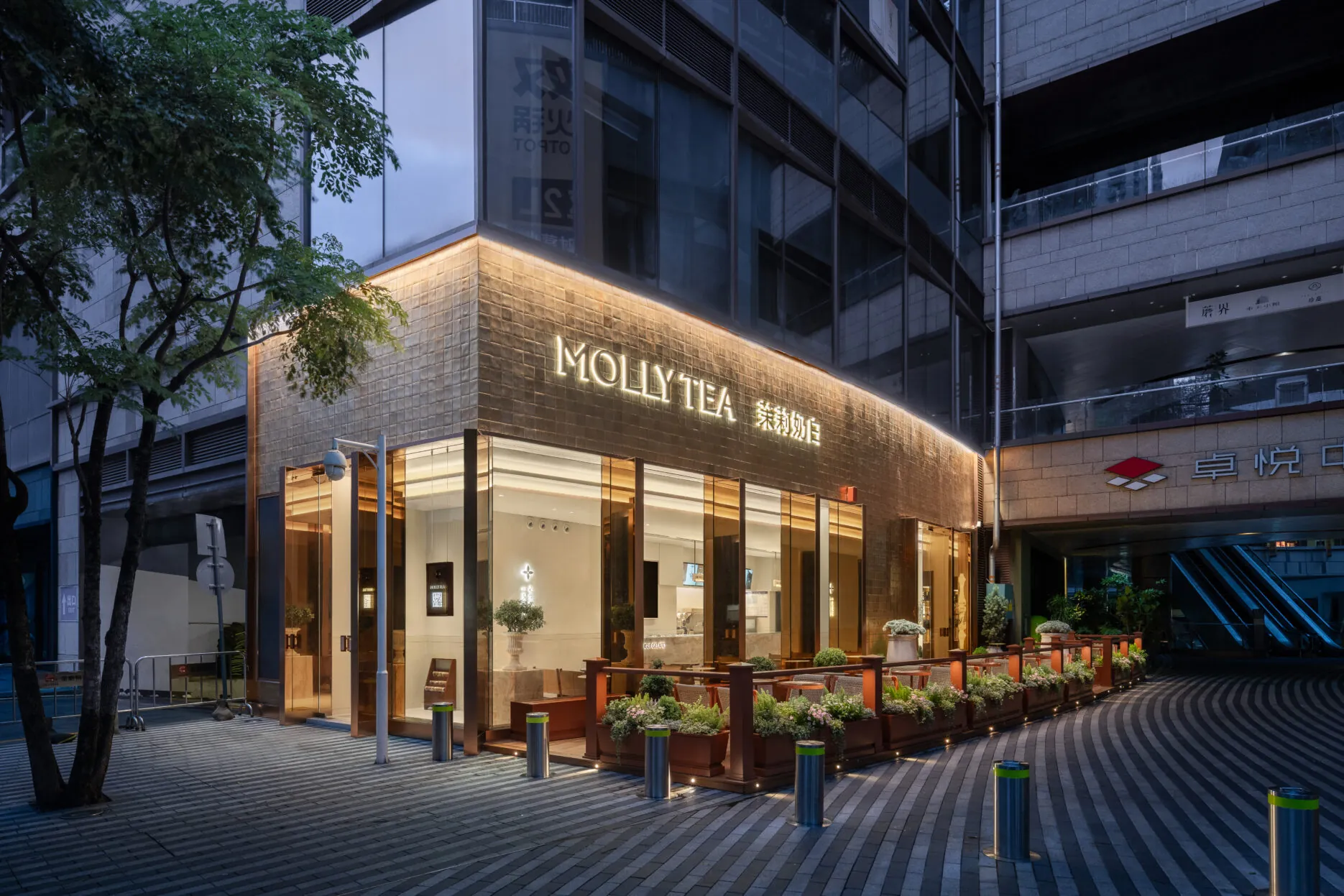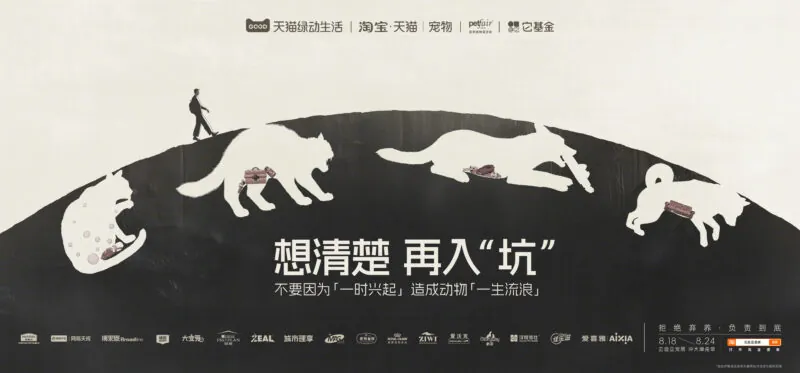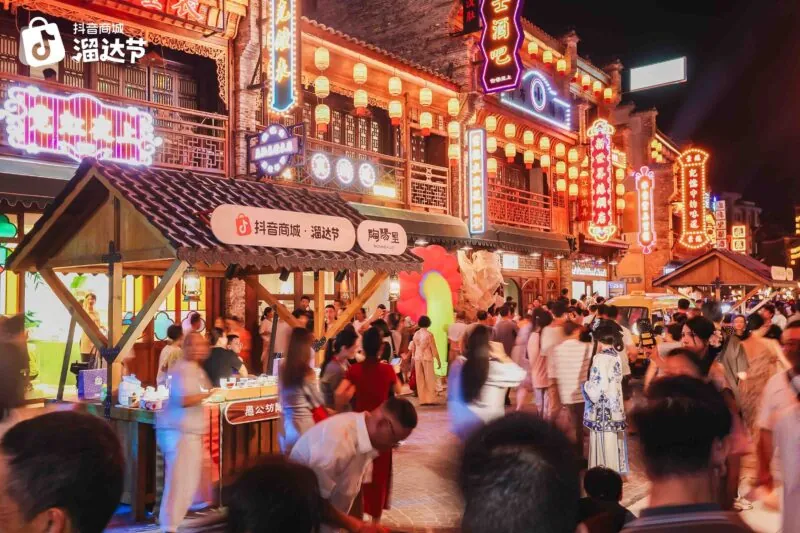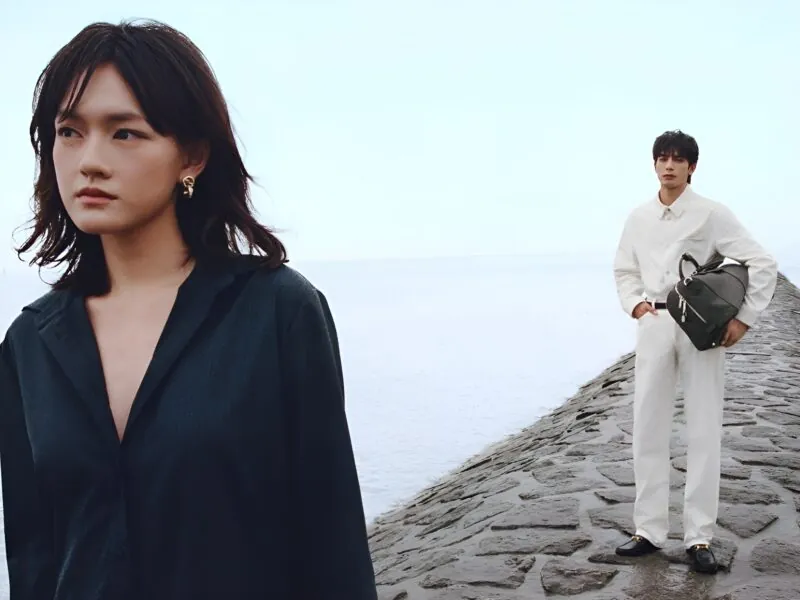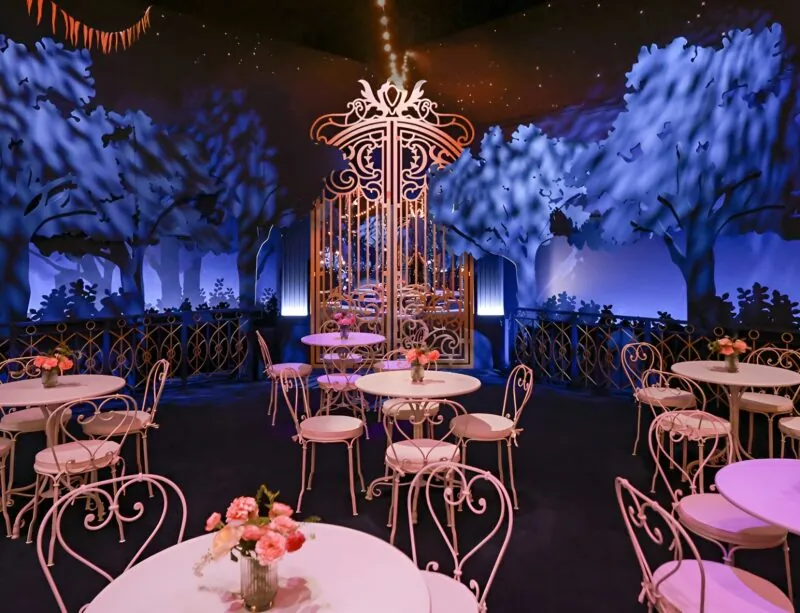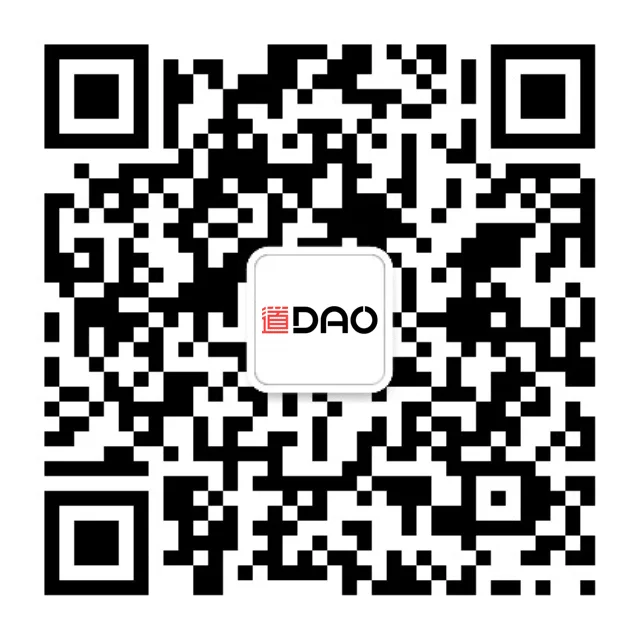Key Takeaways:
- Molly Tea, which has been expanding in China and abroad, sets itself apart from competitors with its cultural messaging.
- With region-inspired ingredients and cultural campaigns, as well as region-exclusive drinks and merch, it takes a leaf out of the luxury marketing playbook.
- It’s cultural marketing also resembles that of designer fragrance and lifestyle brands such as To Summer and DOCUMENTS.
Molly Tea (茉莉奶白) is a rising “new Chinese-style” tea chain that has been expanding both in China and abroad. It recently opened its latest overseas location in London’s Chinatown, after opening stores in the US.
Molly Tea is known for its traditional, culture-centric image and marketing
The name is a play on how “Molly” sounds like the Chinese word “茉莉”, meaning jasmine, as the brand typically uses jasmine tea as its base, creating a signature scent. Molly Tea is known for its traditional, culture-centric image and marketing. However, it does it in a more elevated and refined way that sets it apart from competitors.
Hyper-localisation
It aligns with the rise of “city marketing”, where cities market themselves as brands
When we talk about hyper-localisation, we often think of global luxury giants like Louis Vuitton. But for Chinese brands, it is becoming increasingly rewarding to go deeper into the culture and lifestyle of specific provinces and cities. This aligns with the rise of “city marketing”, where cities market themselves as brands. The source of it all? The post-pandemic boom in domestic travel and the “cultural travel” trend, which has directed tourists to historic sites and museums to learn about local history, culture and lifestyle.
In this sense, hyper-localisation is not just a way to earn cultural credibility with locals but also becomes part of the “cultural travel” experience that contributes to city marketing and supports local businesses.
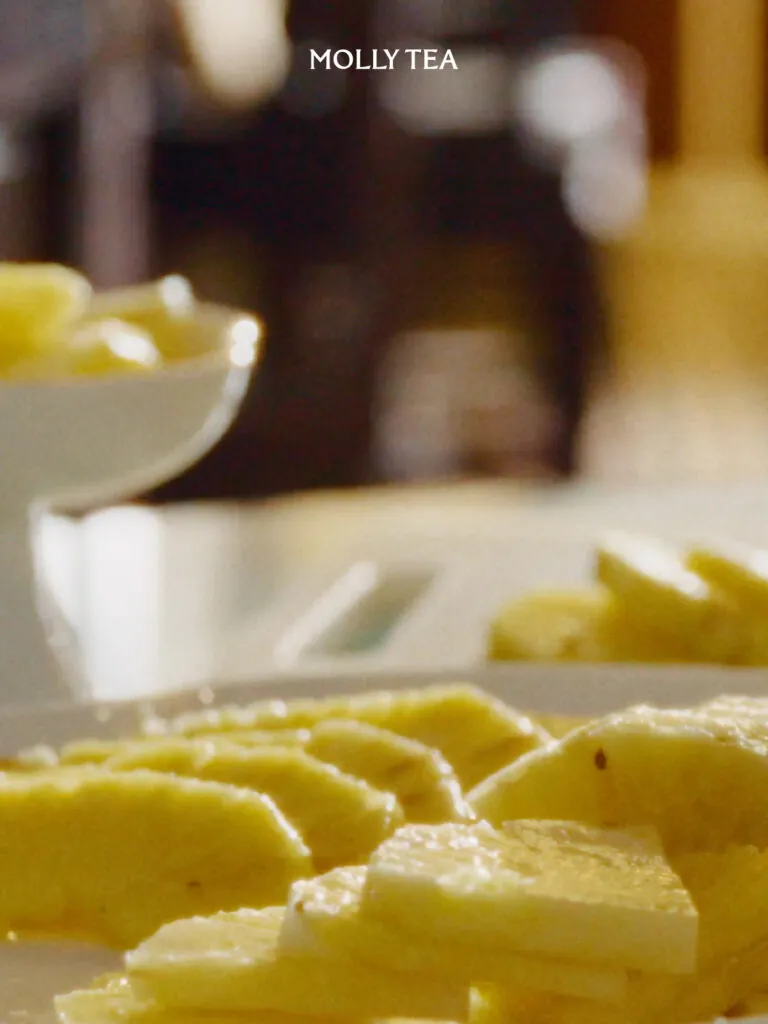
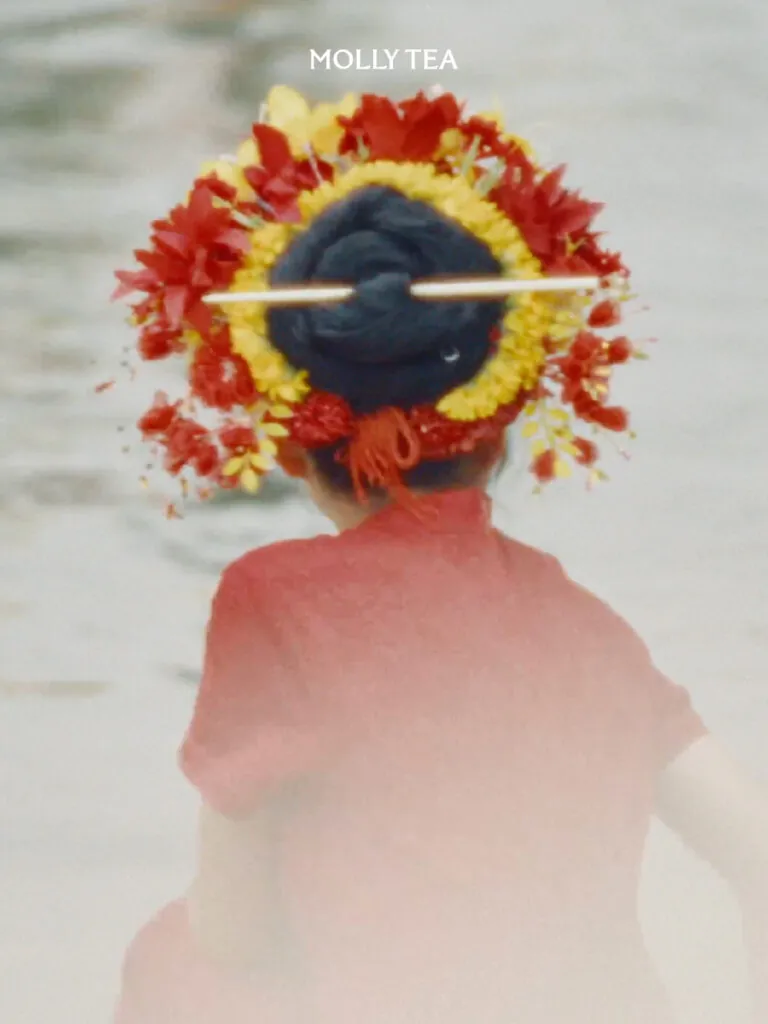
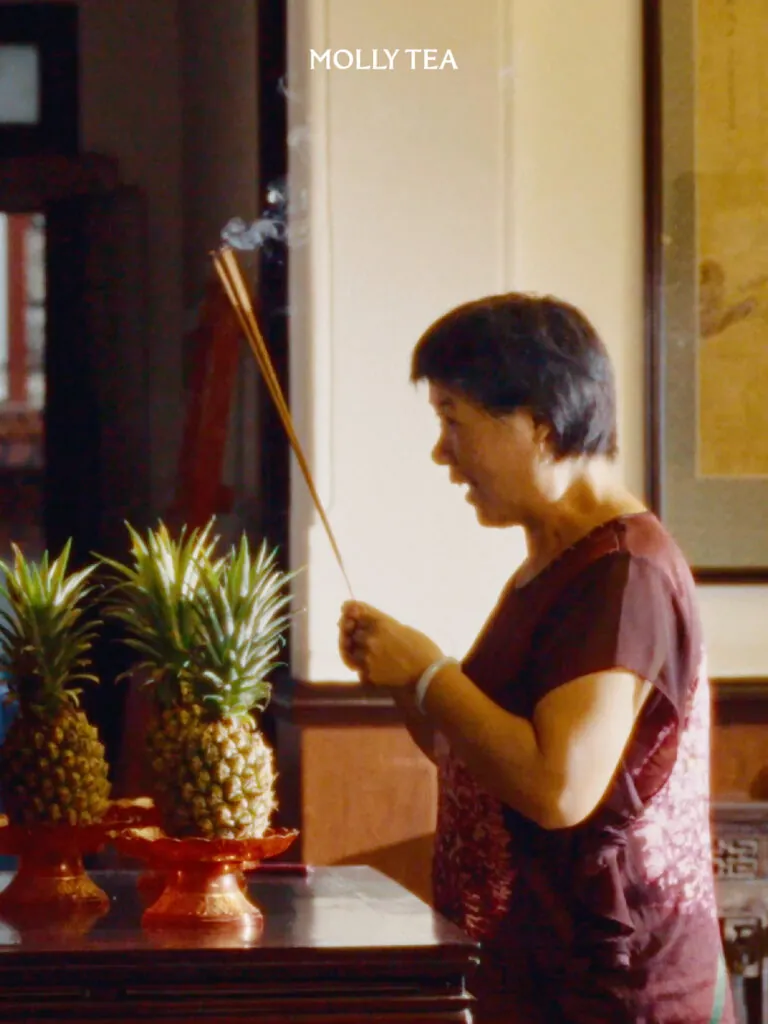
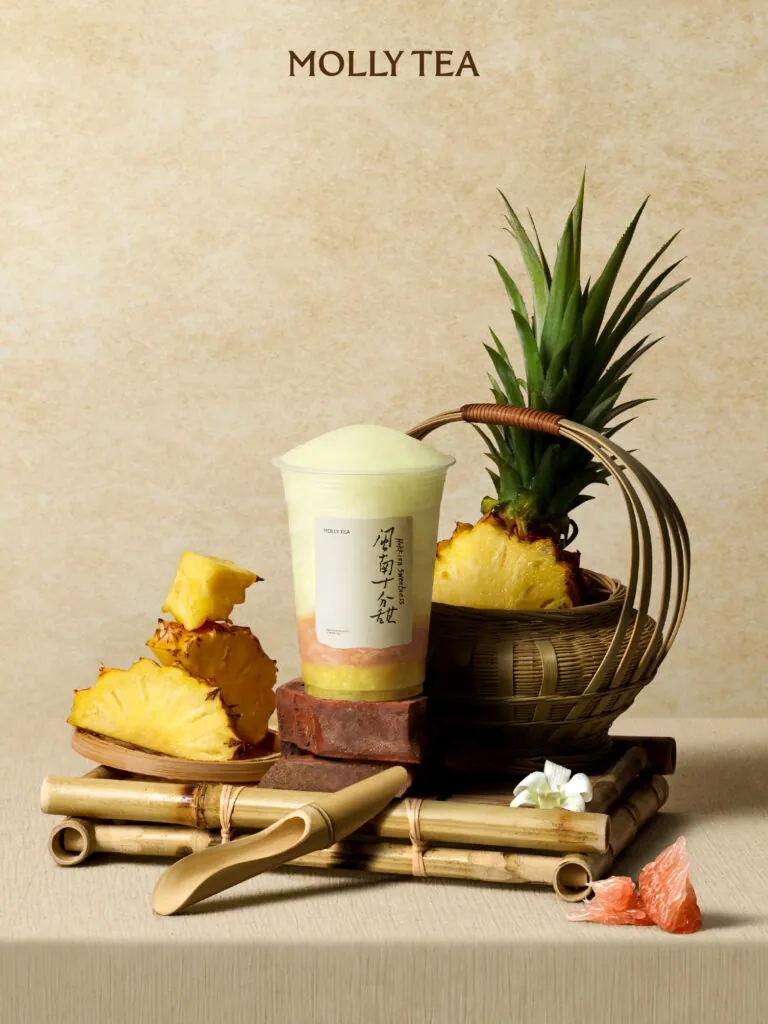
Molly Tea’s hyper-localisation begins by grounding the brand in its space through local ingredients from across China. Its recent “Hokkien Sweetness” pineapple tea dives deep into one of the fruit’s key origins, the southern Fujian province, or Southern Min region. Hokkien is the language/dialect of the area. In the short film it produced for the product, Molly Tea explores the local custom of using pineapples as tributes to the gods and how it connects to sincerity and blessing.
More than ingredients
Like many tea and coffee brands, Molly Tea also uses merch as a means of marketing. Region-exclusive merch has been popular among large chains like Luckin Coffee and is starting to become collector’s items. For Molly Tea, regional merch is a way to connect with local consumers and visitors alike.
For its Xiamen exclusive release, it used herons as its central motif, a bird often used as a symbol of the southern city (and in Fujian), and created a scented air freshener. For the northeastern city of Harbin, known for its ice and snow activities during winter, Molly Tea chose ice as its theme and made a candle. Molly Tea also touched on the elephant for Zhengzhou, Henan and the tiger for Xi’an, Shaanxi. Interestingly, both of these creations hark back to the history of the cities and are modelled after bronzeware artefacts.
Taking a leaf out of the luxury playbook
Aside from the hyper-localisation, the branding of Molly Tea, especially its visual language, borrows heavily from luxury brands. The artistic sensibility and cultural representation in its campaign visuals, still or moving images, create a sense of luxury. The copy often works alongside the visuals to convey the spiritual aspiration of the products. From placing a model and tea in the desert to using a ripening apple as a metaphor for a relationship in its Valentine’s Day campaign, Molly Tea draws on artistic interpretation from luxury marketing and applies it in its own cultural context.
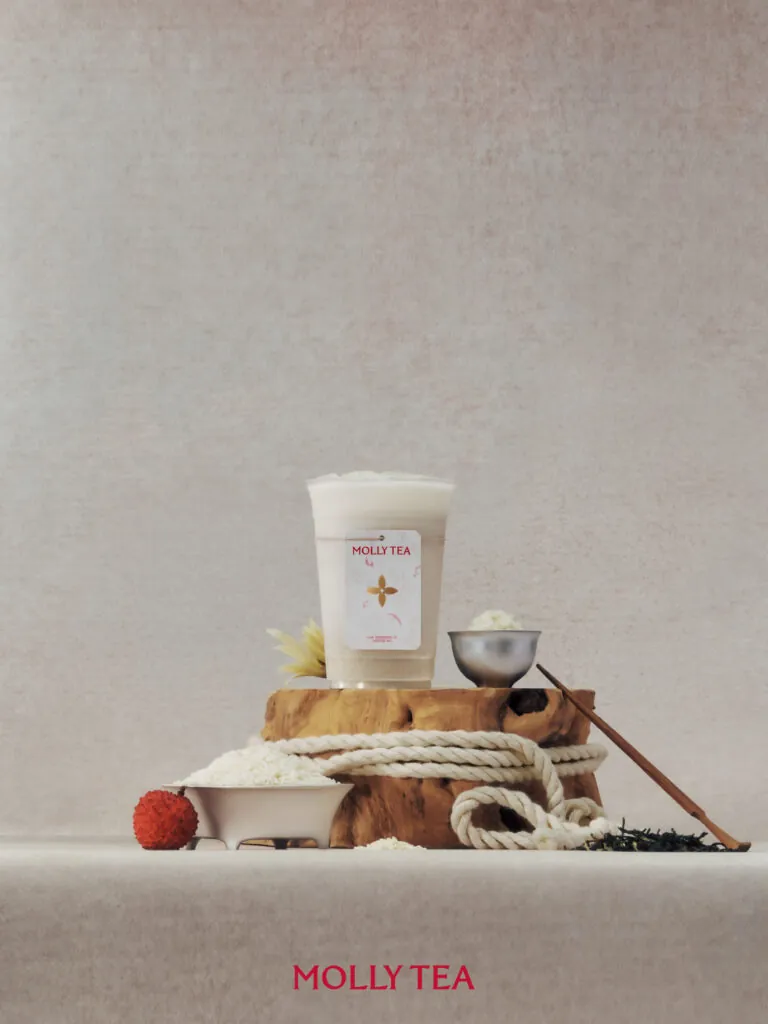
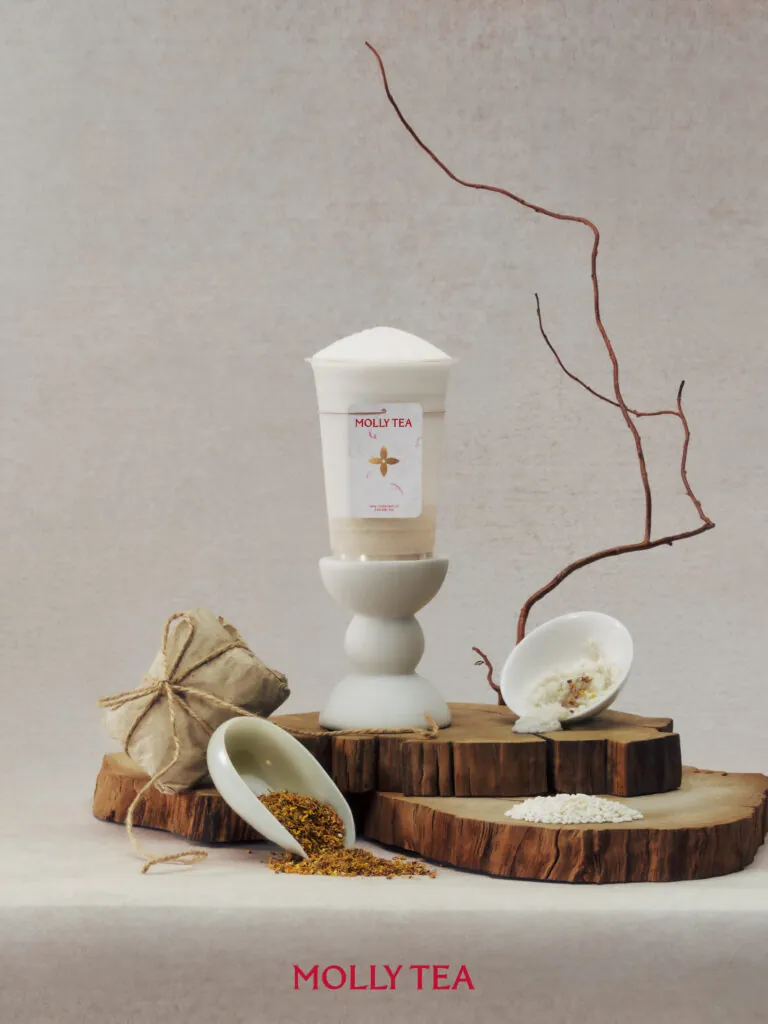
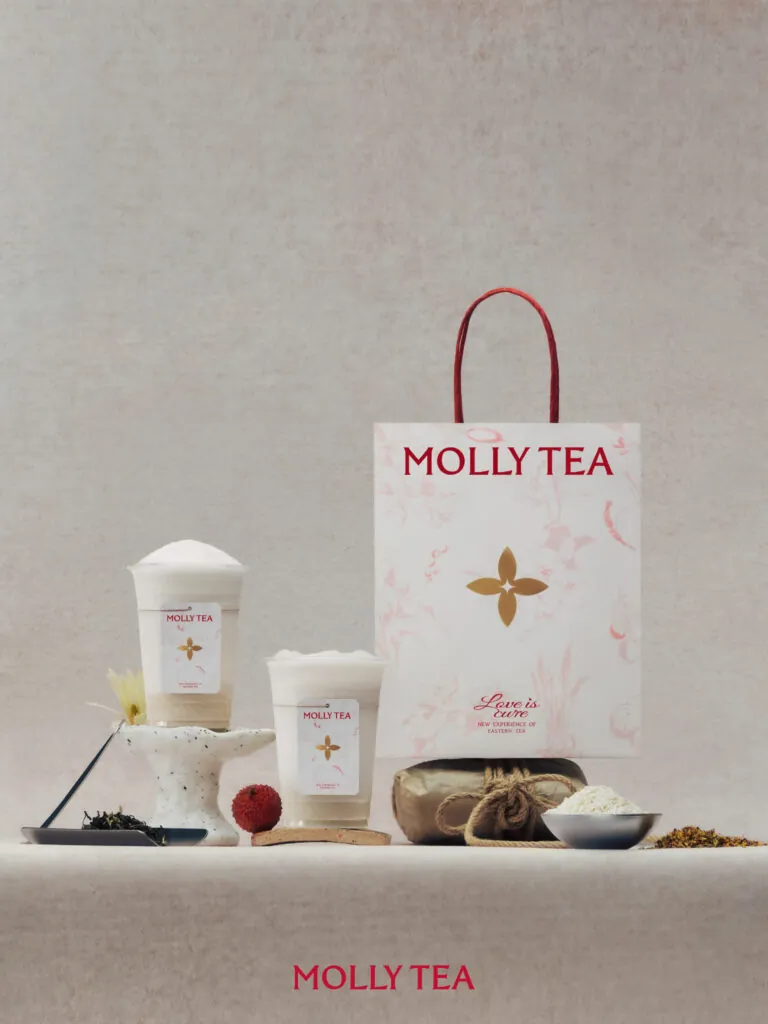
For its most recent Qixi campaign, Molly Tea collaborated with heritage traditional Chinese medicine brand Tonghanchuntang, for a “panacea of love”. The national campaign included two sweet, fermented rice-based teas, evoking the sweetness and tipsy feeling of love. It came with a flask and other merchandise such as stickers. Molly Tea also included special messages in its receipts.
This campaign feels less like luxury and more like designer lifestyle brands such as To Summer or DOCUMENTS, especially with the traditional Chinese perspective. In fact, the brand’s love for fragrance reflects its brand spirit, akin to To Summer and DOCUMENTS rather than HeyTea. However, how it will adapt its image overseas, whether it will double down on the Chinese aesthetic or shift to a more international outlook, remains to be seen.
Need to boost your China strategy? Dao Pro delivers bespoke insights on marketing, innovation, and digital trends, direct from Chinese sources. Find out more from our Dao Strategy Team here.




